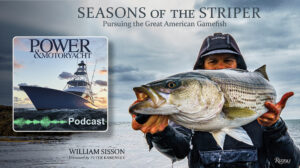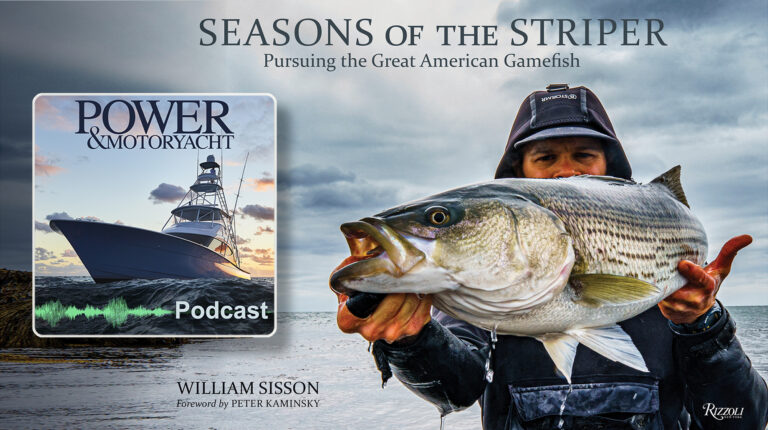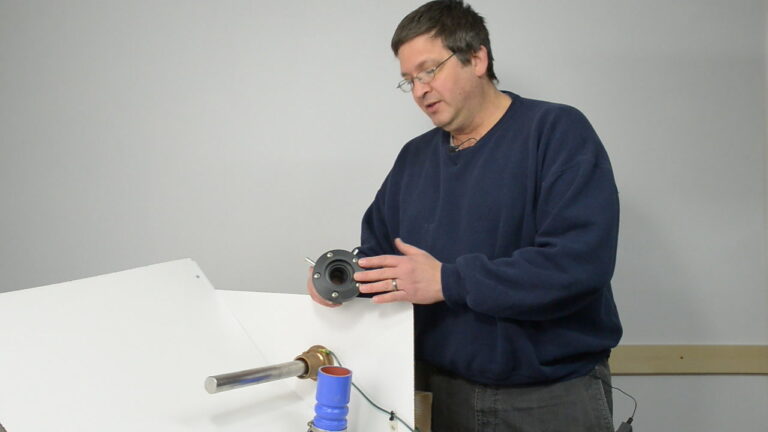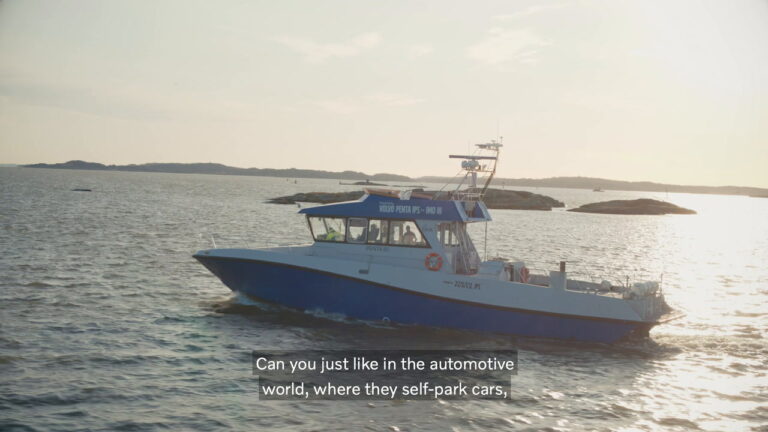The Refit That Sparked Revolution, by Peter Swanson (continued)

1956, VOYAGE FROM HELL
Antonio Del Conde, who has been wining and dining the port captain, gains his tacit approval to break the prohibition on leaving Tuxpán during the storm, but Granma’s departure must be done covertly nonetheless. On the night of November 25, she is piloted slowly downriver and into the ocean. She is run as quietly as possible on one engine and without lights so as not to alert other Mexican authorities in the area. Thanks to rain she is able to sneak past a Mexican frigate on patrol.
Outside, buffeted by winds gusting to over 30 knots, Granma takes a pounding. “Many feared the yacht would not withstand the furious seas,” Collado says. “But she managed to stay afloat, even though on some occasions the sea lifted her and threw her from a cresting wave so hard that it seemed like she would never rise again.”
Within eight hours the worn transmission is acting up again. The only way to deliver power to the prop is to throttle way back on the starboard engine. Rather than 9 knots, Granma only makes about 6.7—so much for getting to the battle on time. The bilge pump fails and the boat takes on dangerous amounts of water. The men bail with buckets until Chuchu fixes it.
Those able to defecate may have been exceptions. Thanks to a phenomenon called “traveler’s constipation,” even some cruise-ship passengers find themselves unable to have bowel movements because of the movement of the vessel. Granma’s pitching and rolling would likely have proved even more disruptive to regularity.
The good news, according to Collado, is that the extra weight is actually making Granma more stable, much in the way that a dory filled with a fisherman’s catch gains stability. “The overloading … was a help toward additional resistance to the seas, without which the yacht could not reach her destination,” Collado writes. “If we had sailed empty, we surely would have ‘turned around the bell.’ That is, flipped upside down.”
Sam Devlin, designer-builder of semi-displacement watercraft, says the benefits to stability would have come with a significant downside. “With the overloaded yacht lumbering about in the water with her undersized rudders and operating at a speed that was well below the optimum efficiency of a semi-displacement design, the helming of her must have been almost of super-human effort,” Devlin says. “Holding her to any consistent course would have been almost impossible.”
With a heavily laden vessel struggling against waves, wind, and current, Castro must have been “sweating fuel” as any thinking skipper would when pushing the limits of a vessel’s range. Unlike modern autopilots, human helmsmen steering to a wet compass tend to zig and zag to their destinations. That kind of meandering wastes fuel, and over 1,200 miles the amount of wasted fuel can be significant. Granma’s helmsmen must come as close as possible to achieving the almost impossible.
Collado mans the wheel, alternating with one other man. Alongside him at the helm are the Castro brothers, Che Guevera, and other leaders. Collado alone seems immune to seasickness. Nothing can happen to him that is worse than what he’s already suffered in Batista’s torture rooms. He was the sonarman on a Cuban patrol boat (also built by Wheeler) that sank a U-Boat in the Florida Straits, the smallest boat in history to ever sink a submarine. His ears are so good that doctors have determined he can even hear high-pitched dog whistles.
By the third day the sun shines and seas mellow. The frontal system has passed and winds diminish to 20 knots. Trade winds; contrary but manageable. The navigator takes a noon shot with his sextant.
Chuchu’s tinkering improves the performance of the troublesome starboard engine, and Granma now makes 7½ knots. Collado recalls “the clamor of hungry guts.” Too bad, much of the food is still in Tuxpán, left behind in the rush to embark. Fortunately the men of Granma have a couple thousand oranges to suck on. They wash themselves down with bucketfuls of seawater.
At one point, Chuchu pleases the crowd with cartons of cigarettes he has hidden with the engines.
The Cuban government has learned of Castro’s “invasion” plan and alerts its naval and air forces to hunt for a white motoryacht. Granma is most vulnerable to interception when she passes through the Straits of Yucatan, in which only 104 miles separate the westernmost tip of Cuba and the islands off Cancun, Mexico. She thunders on through, unobserved.
Guided by the Cape Cruz light, they reach the coast, but not where intended. The rebels realize their charts for this coast are wrong. Low on fuel and with dawn approaching—with the potential for discovery by enemy air patrols—Castro orders full throttle and runs the boat aground about 100 yards from mangroves.
The mortars and machine guns are loaded into the dinghy, which promptly sinks. Then the men lower themselves into the water and, chest-deep, carry their rifles over their heads into the swamp. Batista’s aircraft arrive and randomly strafe the mangrove forest through which they march.
Still, Castro has achieved his first two goals. His force has left Mexico and eight days later arrives in Cuba. Now, as he says, they must survive 72 hours. He is prescient. Three days after coming ashore the rebels are betrayed by their guide and ambushed by government troops, and most are killed.
Only 20 or so bedraggled survivors, including the Castro brothers, reach the safety of the Sierra Maestra mountain range. Collado is among a handful spared upon capture. Back to prison he goes. Chuchu Reyes also manages to survive.
AFTERMATH
Castro fights on with a force that usually numbers no more than 300 insurgents. They win a succession of victories against larger government forces, whose numbers nationwide total more than 35,000. With ranks swollen to around 1,000 fighters, Castro’s revolutionary army seizes the capital.
In April 1959, Castro goes on an 11-day victory lap in the United States, a trip that happens before he identifies himself as a Communist and begins nationalizing American-owned property. On a detour to Texas, a Castro charm offensive convinces the governor to intervene on behalf of “friend” Del Conde, who is released from prison after serving only 11 months. He and his family live and work in Cuba until the mid-1960s when they return to Mexico. Today, Del Conde is celebrated as a hero at home.
Cuban rebels free Norberto Collado from prison in 1959, and he is returned to military service as a naval officer, something he says could never happen in the World War II navy because of the color of his skin. He rises to the rank of captain, and one of his special duties is caretaker for Granma, now become the Old Ironsides of the Cuban Revolution.
“Granma had completed an incredible transit,” he writes. “Although overloaded and experiencing mechanical problems, she handled the angry sea like a big ship. She was my boat!” He dies on April 2, 2008, and is buried with military honors.
President Raul Castro, who promises to retire in 2018, may well be the last remaining survivor of the Granma expedition.
NOV. 25, 2016
For better and worse, Fidel Castro rules for more than 50 years. He outlives his most powerful enemies. Famously, he once says, “History will absolve me.” History, for sure, will judge him, and the examination begins well before the Comandante dies at his comfortable Havana estate near the sea. Throngs of Cuban people line the roads as a jeep carries his ashes to a place of interment at Santiago, Cuba’s easternmost major city.
Believers in an afterlife, which Castro was not, will often associate death with a sea voyage or river crossing. On November 25, 2016, Fidel Castro leaves the world stage and embarks on his final passage. His death happens 60 years to the day after Granma slipped from the Tuxpán River into the Gulf of Mexico, heading to the fray.










